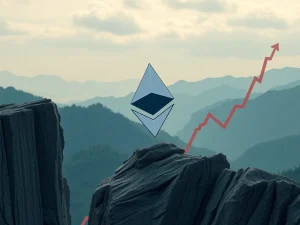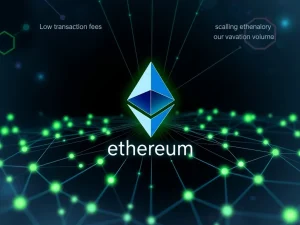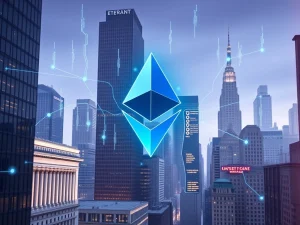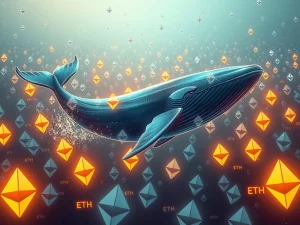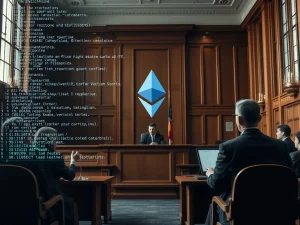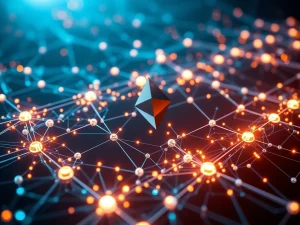Latin American Blockchain Development: Unlocking Tremendous Potential with Ethereum and Polygon
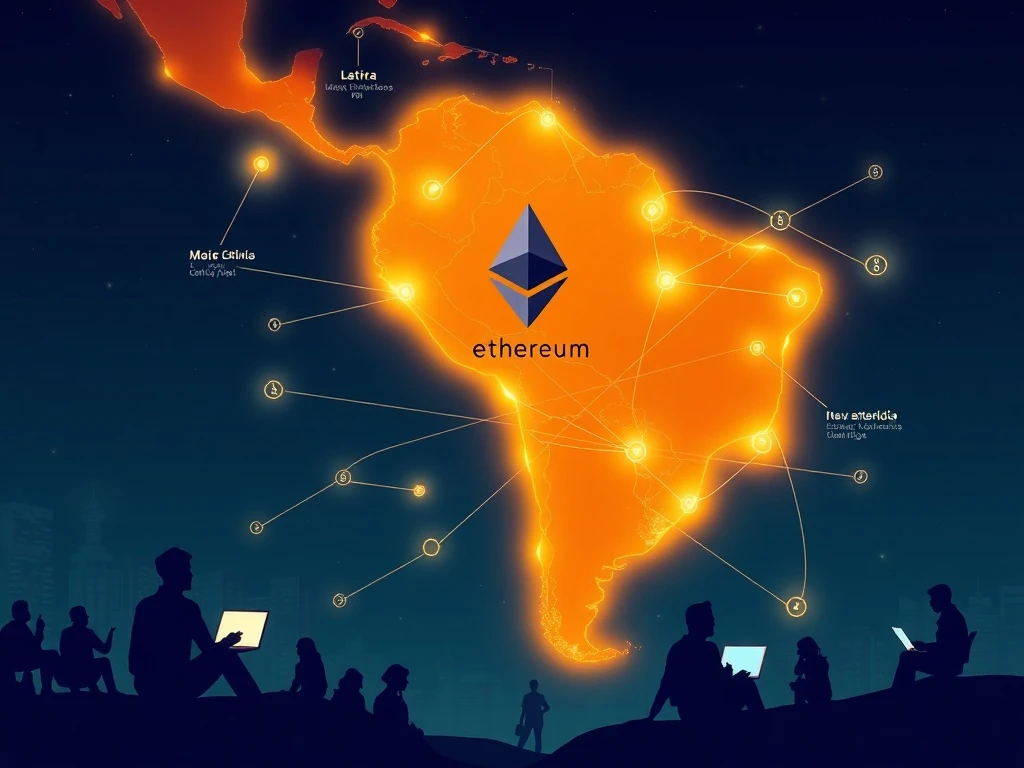
A significant shift is underway in the global blockchain landscape, with Latin American blockchain development emerging as a powerful force. A recent report highlights a clear preference among the region’s talented developers for building within established ecosystems like Ethereum and Polygon. This strategic focus positions Latin America not just as a consumer, but as a pivotal hub for innovation and adoption within the decentralized world.
Latin American Blockchain Developers Gravitate Towards Established Ecosystems
Latin America’s developer community shows a strong inclination towards building on proven blockchain platforms. Specifically, Ethereum and Polygon attract the most attention, rather than new, nascent base-layer protocols. This insight comes from a comprehensive study by Sherlock Communications, a leading consultancy firm. The report incorporated valuable qualitative inputs from 85 developers across Bolivia, Mexico, Brazil, and Peru. These insights reveal a community that highly values transparency, efficient coordination, and robust compliance within their chosen development environments.
Developers in the region prioritize intuitive tools, comprehensive documentation, and platforms with established track records. Consequently, networks like Ethereum and Polygon naturally align with these preferences. Luiz Eduardo Abreu Hadad, a blockchain consultant and researcher at Sherlock Communications, emphasizes the unique qualities of Latin American blockchain developers. He notes their “strong technical maturity” and a pragmatic focus on solving real-world issues. Hadad further states, “Latin America has a growing, increasingly skilled developer community.” While these developers possess the capability to forge entirely new platforms, the current reality sees the region becoming a central hub for development and adoption within existing, well-supported ecosystems.
Ethereum Latin America: Dominating On-Chain Activity
The report’s on-chain data analysis compellingly supports the trend of favoring established networks. Researchers meticulously analyzed 697,000 blockchain transactions. These transactions were meticulously tagged to wallets identified as originating from Latin America. The findings are striking: Ethereum accounted for over 75% of all tagged transactions in the region between June 2024 and June 2025. This significant percentage underscores Ethereum’s dominant position in terms of both developer and user interest across Latin America. The network’s robust infrastructure and extensive developer tools evidently provide a stable foundation for innovation.
Ethereum’s widespread adoption reflects its reliability and the vast ecosystem of decentralized applications (DApps) already available. Developers benefit from a mature environment, offering extensive resources and a large, active community. This allows them to focus on application development rather than core protocol challenges. The high transaction volume on Ethereum Latin America indicates not just developer activity, but also substantial user engagement with DApps and decentralized finance (DeFi) protocols. This robust activity solidifies Ethereum’s role as a cornerstone of the region’s burgeoning blockchain economy. Furthermore, the familiarity and trust associated with Ethereum reduce barriers to entry for new projects and users alike.
Polygon Adoption Soars in the Region
While Ethereum maintains a commanding lead, Polygon’s adoption is also rapidly accelerating. The report indicates Polygon represented 11% of the total activity during the same June 2024 to June 2025 period. Notably, Polygon nearly doubled its activity to 20% by June 2025. This remarkable growth highlights Polygon’s increasing appeal, particularly for projects seeking scalability and lower transaction costs. As an Ethereum scaling solution, Polygon offers a compelling alternative for developers building high-throughput applications.
The rise in Polygon adoption demonstrates a strategic choice by developers to leverage its benefits. These include faster transaction speeds and significantly reduced gas fees, which are crucial for mass-market DApps and microtransactions. Its compatibility with the Ethereum Virtual Machine (EVM) ensures a seamless transition for developers already familiar with Ethereum’s toolset. This dual focus on both Ethereum and Polygon provides a balanced approach. It allows developers to choose the optimal platform based on their project’s specific requirements, whether it’s the security and decentralization of Ethereum mainnet or the efficiency and cost-effectiveness of Polygon. Consequently, the increasing Polygon adoption is a clear indicator of the region’s evolving blockchain needs.
Local Initiatives and the Future of Blockchain Developers
Despite the strong gravitation towards established ecosystems, Latin America is also fostering unique local initiatives with global potential. Hadad specifically points to innovative tokenization projects. He also highlights national blockchain infrastructures like Núclea Chain and RBB in Brazil. These examples clearly demonstrate the region’s inherent capacity to create and nurture new blockchain ecosystems. This dual approach—building on global platforms while also innovating locally—positions Latin America as a dynamic force in the blockchain space.
The expertise of Latin American blockchain developers is crucial for these burgeoning local projects. Their ability to adapt and apply their skills to diverse challenges is a significant asset. These local initiatives often address specific regional needs, from financial inclusion to supply chain optimization. Therefore, they can serve as powerful models for other emerging markets. The balance between leveraging global standards and fostering local innovation is key to sustainable growth. It ensures that the region not only participates in the global blockchain conversation but also contributes uniquely to its evolution.
The Next Generation: Focusing on DApps and RWAs
What does the future hold for the next generation of Latin American blockchain developers? Hadad’s insights offer a clear direction. He predicts that students and hackathon entrants will increasingly position themselves towards decentralized applications (DApps) and real-world asset (RWA) tokenization in the coming years. This focus reflects a desire to build practical, impactful solutions that address tangible societal and economic needs. Newer developers are particularly interested in DApps capable of reshaping fundamental sectors, such as social media and the burgeoning creator economy.
Furthermore, the interest extends to critical areas like supply chain traceability, which offers immense value in a region rich in natural resources and agricultural exports. Decentralized Physical Infrastructure Networks (DePIN) also capture the imagination of these forward-thinking developers. However, the most compelling area for the next generation is undoubtedly Real-World Asset (RWA) tokenization. This involves representing tangible assets like real estate, commodities, or even intellectual property on a blockchain. This innovation promises enhanced liquidity, fractional ownership, and increased transparency. Hadad succinctly summarizes their motivations: “They look for stable ecosystems, intuitive tools, and sustainable economic incentives, focusing on solving real problems around trust, transparency, and usability.” This pragmatic outlook underscores a commitment to creating meaningful, blockchain-powered solutions.
Latin America’s Pivotal Role in Global Blockchain Evolution
Ultimately, the trends observed in Latin American blockchain development paint a clear picture of a region embracing the future. By strategically focusing on established, secure, and scalable platforms like Ethereum and Polygon, developers are building a robust foundation for innovation. This approach minimizes risks associated with nascent technologies while maximizing access to extensive developer communities and resources. The region’s unique blend of technical maturity, problem-solving focus, and a growing talent pool positions it as a critical player in the global blockchain narrative.
The increasing adoption of DApps and the exploration of RWA tokenization demonstrate a clear pathway towards real-world impact. This pragmatic application of blockchain technology promises to unlock new economic opportunities, enhance transparency, and foster greater financial inclusion across Latin America. As this dynamic ecosystem continues to evolve, the contributions from Latin American blockchain developers will undoubtedly shape the next wave of decentralized innovation, influencing global trends and setting new standards for digital transformation.

